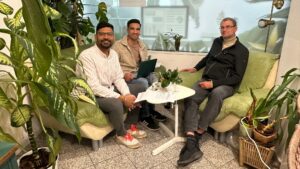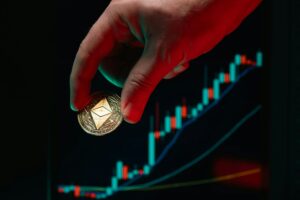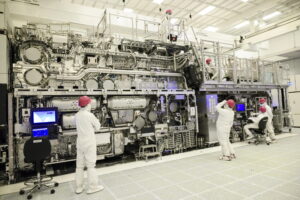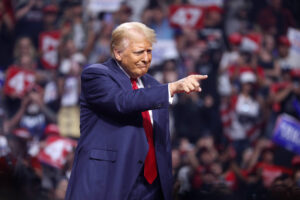enspired: Why energy trading as a service is the future

A great shift is happening in the global energy industry. With the rise of renewable energies, no longer do giant providers of the fossil fuel industry and nuclear power hold the sole monopoly on the market. More and more smaller providers are popping up everywhere. However, this has led to an increase in volatility, a problem that only modern digital solutions can solve. A startup that is at the forefront of these solutions is enspired. Using artificial intelligence, the young Vienna-based company enables providers of clean energy to profit from their flexibility on the intraday market. This helps them to optimally market energy from wind power or solar plants as well as improve their efficiency. By now, enspired has decided to offer trading as a service, rather than the software itself. In this interview, enspired’s CTO Wolfgang Eichberger and COO Johann Schuetz talk about what led to this shift.
Trending Topics (TT): What has changed in the last few years that has made your service at enspired more attractive to the market rather than the software itself?
Wolfgang Eichberger and Johann Schuetz (WE & JS): With lots of coal and nuclear power taken out of the market, volatility has risen a lot, making it harder for even the larger market participants to take out the spikes with their flexible capacity. A lot more smaller participants that are active on the power market will be needed to do that. And with a trading volume below a certain level, it becomes uneconomical to establish a complete trading and IT development team with shifts to rent or buy software that facilitates the job of the trader and to buy the data and the models needed to understand the current grid situation and demand. The intraday markets also show substantially higher activity than they did some years ago, which makes manual trading very difficult and even impossible for some business cases like efficiently trading storage or a battery considering all its technical and commercial restrictions.
TT: What are the advantages for the customers of “trading as a service”?
WE & JS: Our market knowledge and experience allows us to offer well adapted trading services for different kinds and sizes of customers. We have our company fully digital and are convinced that we offer the highest profit for flexible assets in the market. Of course, our customers also benefit from diverse synergies that derive from standardization and automation of critical processes, versatile modeling environments, collective data pools used by models and algorithms and of course the know-how of our augmented trading specialists. And all of that with very little effort from the customer – no high availability infrastructure needed, no software, no monitoring, no 24×7 shifts and no training required. Trading flexibility with us is even completely risk-free for our customers. We share revenues with our clients for the benefit of both of us and for keeping us in a constant effort to find better and better ways of trading their assets on the markets.
TT: How do you ensure that despite the outsourcing of services by the customer, they still know exactly what is happening with their asset?
WE & JS: enspired stands for full transparency. As soon as a customer is live, they get access to a dashboard where they see everything that we do with their asset in real-time. On a daily basis, they also get detailed reports on every single trade we make for them. We also regularly meet with them in order to discuss how we can jointly improve results.
TT: How do you make sure that every customer at enspired gets the best configuration?
WE & JS: We always strive to find some historical data, either from the customers themselves, or based on assumptions we make together. Based on that, we can identify several trading procedures that work best for the specific asset. This does not essentially mean finding the most profitable strategy. Sometimes the interest of the customer lies somewhere else, like minimizing risk or reducing strain on the machines. In the final joint workshop, before we start trading, we decide from a set of options. From this starting point we deploy our self-learning models that can handle different fundamental and market environments so that we don’t have to interfere manually.
TT: How good can your service actually be?
WE & JS: It all depends on the customer’s case. We had projects where we managed to beat customer expectations by more than 100 percent. Usually, we are in the range of two-digit percentage improvements even if the client is already into algo-trading.
TT: Where do you see the future of trading with AI?
WE & JS: We assume that without heavily investing in state-of-the art AI techniques, like deep neural networks and reinforcement learning, we would hit a glass ceiling of model efficiency within the next years. The vast amount of data we have to process poses a limit to what models we can use to exploit it. Most machine learning methods suffer from a bad “number of data sets” to “processing effort” rate when data sets become huge. Neural networks perform much better here. In the end, AlphaGo-like model training and trading execution will be the most efficient method of joining market and asset. And this is one of our primary focuses.
TT: How will this work then?
WE & JS: Sorry, we can’t tell. It’s a secret. 😉




























